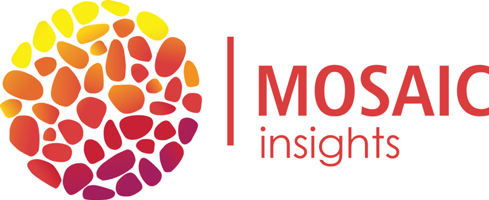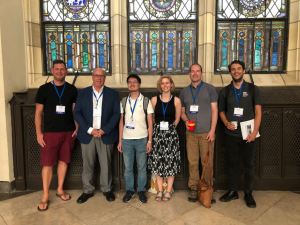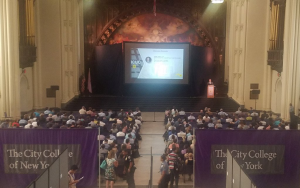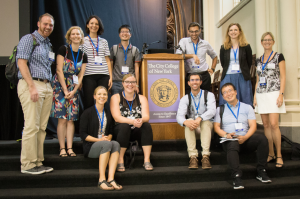
25 Sep Is the future of Urban Adaptation Co-development?
Cynthia Rosenzweig, the head of the Climate Impacts Group for the NASA Goddard Institute for Space Studies has proposed that a crucial foundation for effective urban adaptation planning is to co-develop plans with stakeholders and scientists so that urban resilience can be improved. A significant challenge given we plan cities with limited understanding of co-development and integration.
From August 6–10 2018 the historic City College of New York was host to the 10th International Conference on Urban Climate. As Manhattan is the densest part of the USA, it was the perfect location for a wide-ranging discussion on urban climate and urban resilience.
The conference had over 700 attendees and 500 presentations from people all around the world. The presentations were given by experts in the field of urban design, urban meteorology, the urban heat island, urban heat mitigation, biometeorology, climate change adaptation and mitigation, urban model development and many more.
I was lucky enough to be an invited speaker in the field of Climate Change Adaptation and Mitigation in Urban Environments. I took the opportunity to present my latest research findings involving how effective urban heat mitigation strategies are likely to be in Melbourne against heatwaves from the future climate. I ran several urban heat mitigation experiments including the implementation of cool roofs across the city where every rooftop in Melbourne is effectively painted white to reflect away solar radiation (like a giant Santorini), and a doubling of vegetation in the city. I found that while heatwaves are likely to be ~3˚C warmer in 2050 compared to the current climate, the urban heat mitigation strategies are as effective in the future climate as they are in the current climate. Another key finding was that doubling urban vegetation and irrigating it could be as effective at reducing the temperature as cool roofs across all of Melbourne. However, extra vegetation raised the humidity meaning that in terms of human thermal comfort, the cooler temperatures might not be noticed by people in the city as higher humidity makes it feel warmer.
- With my former Monash University research group including Nigel Tapper (second from the left), the current President of the International Association of Urban Climate, the body that oversees the conference
- The opening ceremony of the conference featuring members of New York Mayor Bill de Blasio’s office
- The members of the Students and New Professionals Group of the International Society of Biometeorology (I am second from the left)
The insights from international leaders at the conference highlighted that:
- Renters are more likely to be exposed to dangerous levels of heat than home owners
- Mitigating the urban heat island can be economically beneficial using a cost-benefit analysis
- Google Street View images can be used to determine the Sky View Factor, a crucial variable for urban microclimate modelling as it considers shadows from buildings and vegetation
- Population growth has a large effect on the urban heat island and the effectiveness of urban heat mitigation
- Reducing the UHI can have direct effects on reducing heat related illness.
The insights gained from the wide range of talks at the conference highlight that issues facing urban areas, from increasing populations to climate change to urban heat mitigation, need to be considered holistically as there will always be an environmental, economic and most importantly human aspect to everything. Mosaic Insights enables these insights to become ideas that lead to impact. Our insights come from our unparalleled network, experienced staff and collaborative process. We generate ideas that create impact: we drive revolutionary, not incremental, change. We create sustainable, resilient, liveable landscapes that support healthy and productive communities.
By Stephanie Jacobs




